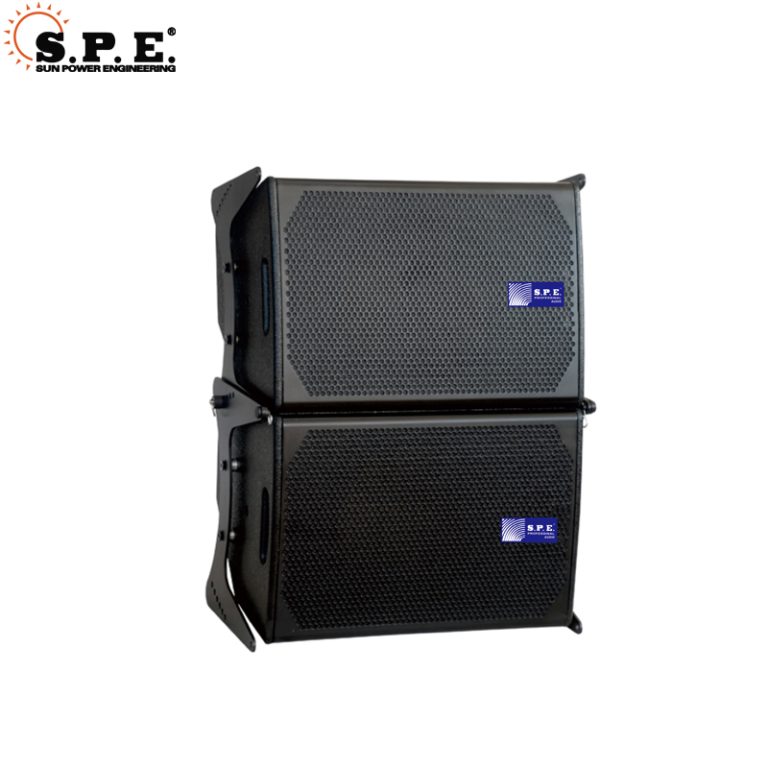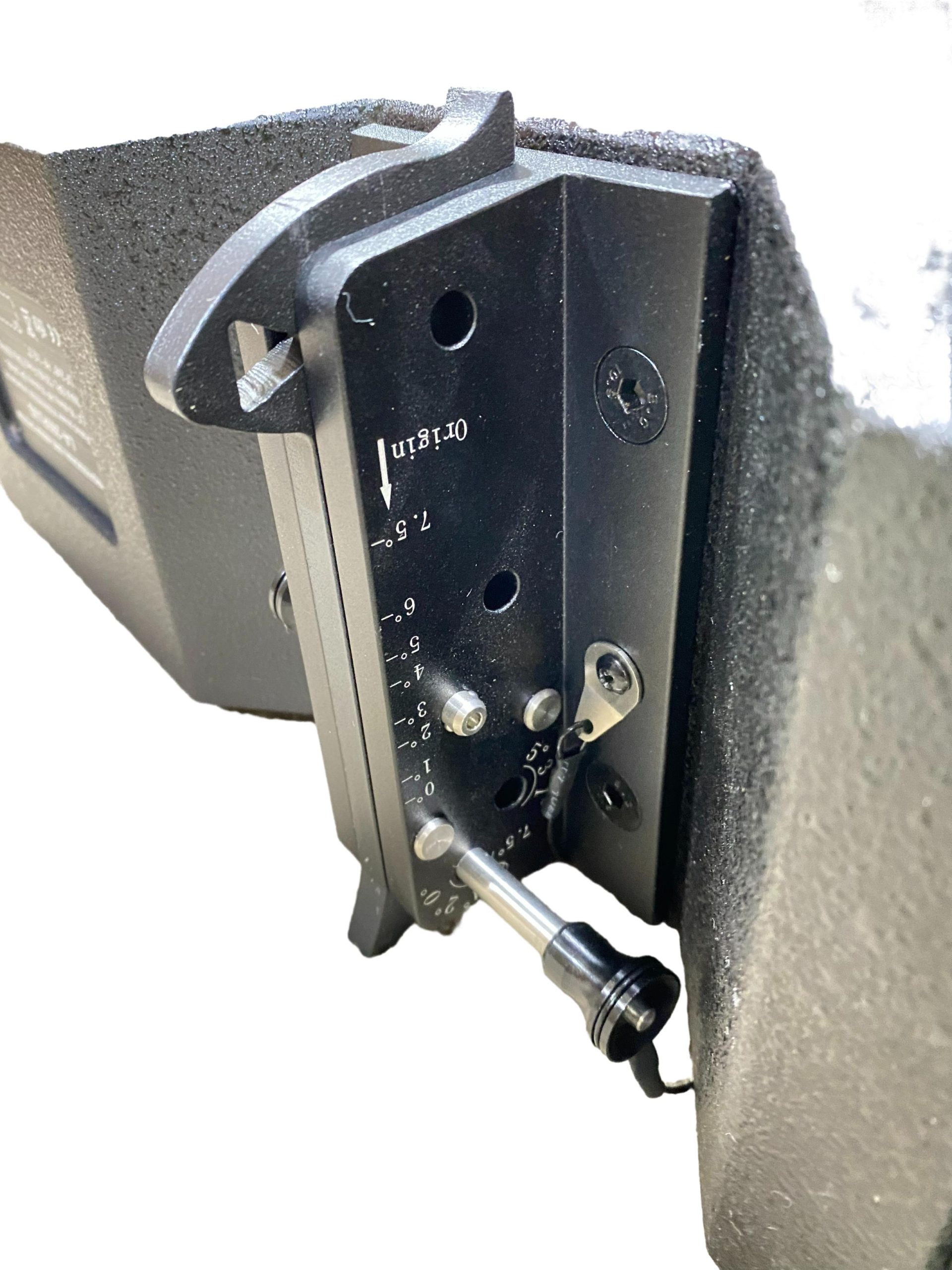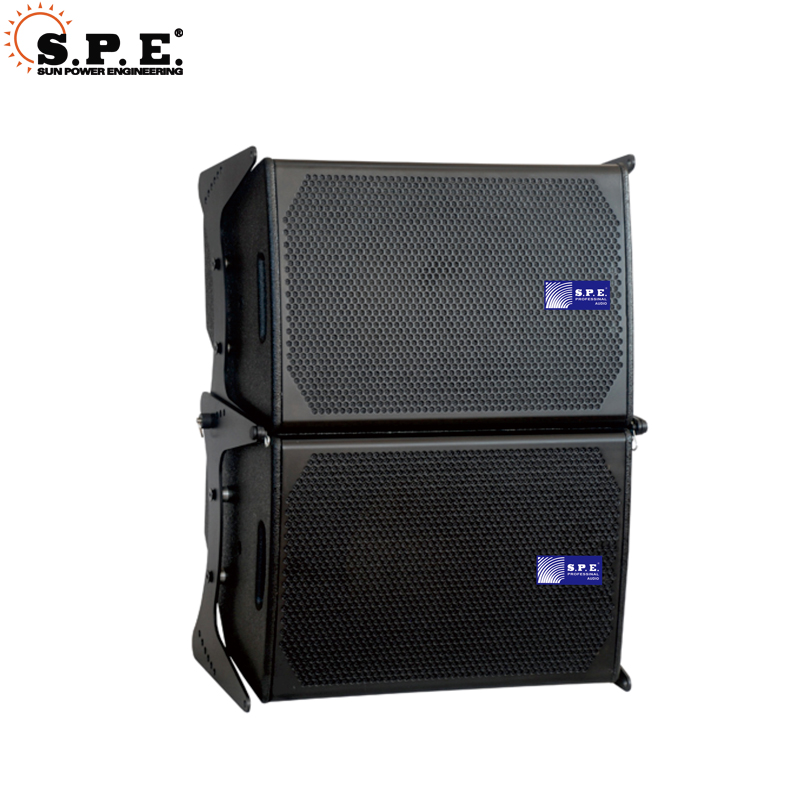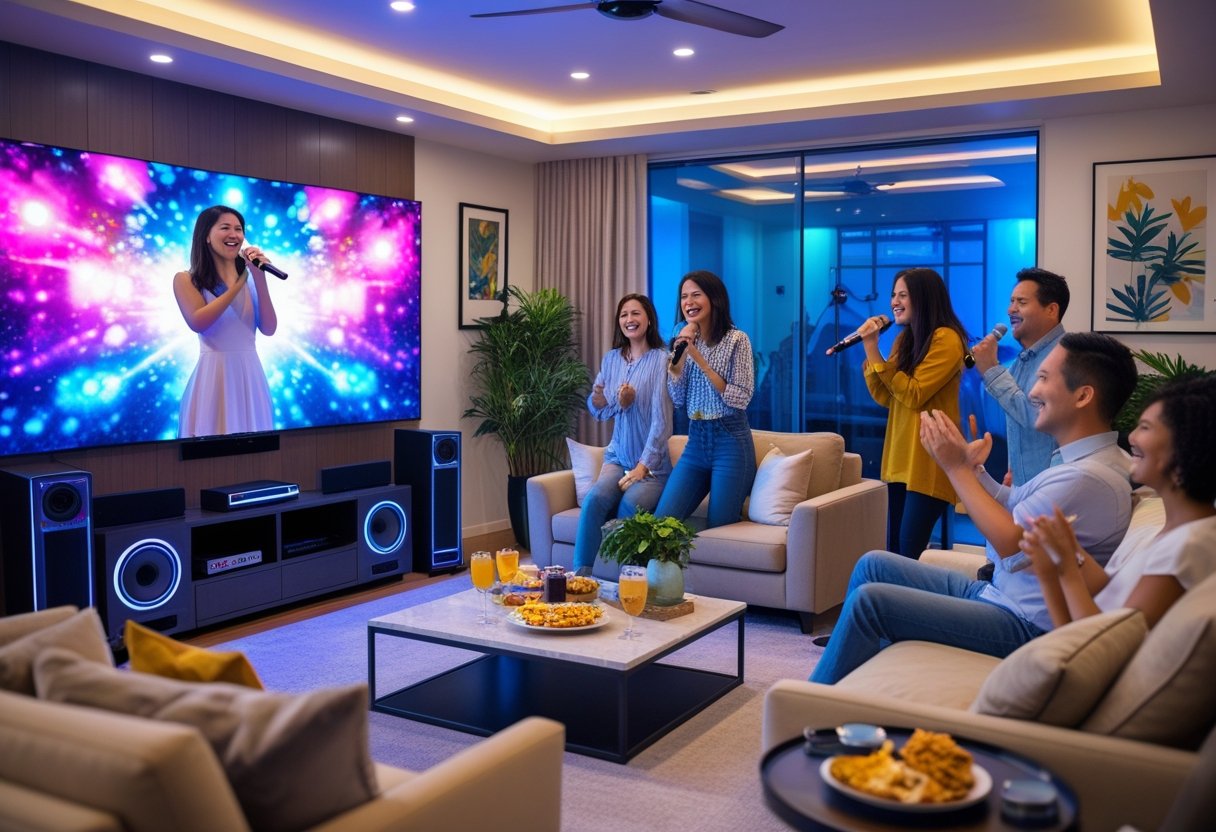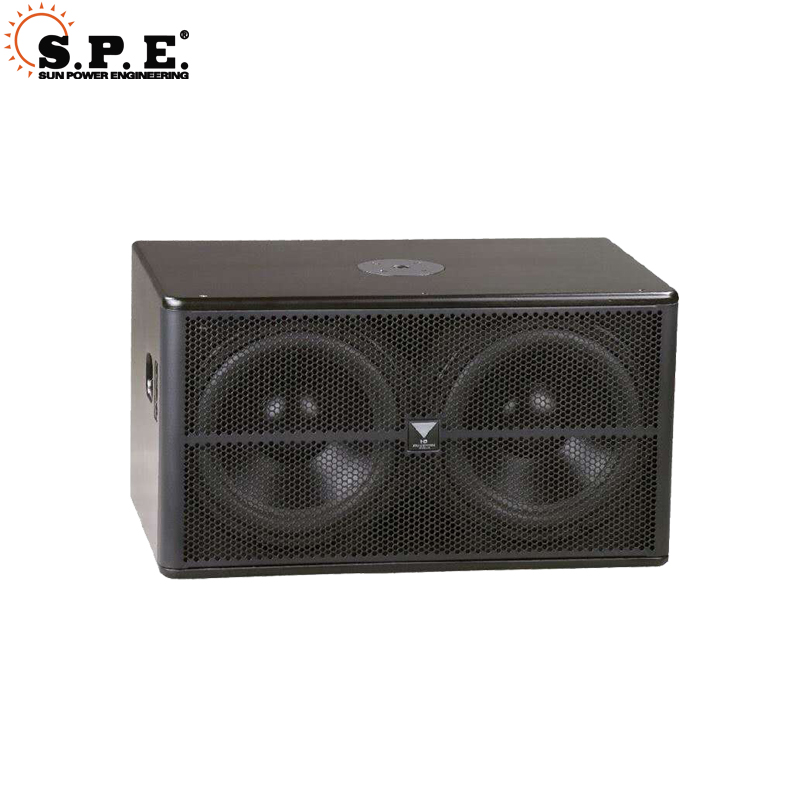Давайте поговорим о звуке, а именно о мощном звуке в относительно компактных корпусах: 10-дюймовых линейных массивах. Они уже не только для масштабных концертов; их можно увидеть повсюду: от подиумов на неделях моды до корпоративных мероприятий. Почему? Универсальность, мощность и удивительно компактный размер.
Почему 10-дюймовый линейный массив сейчас на пике популярности
Линейные массивы, как правило, существуют уже довольно давно. Но 10-дюймовые динамики — это идеальный вариант. Подумайте сами: вам нужны чёткость, громкость и контролируемое рассеивание звука. Более крупные динамики (12, 15 дюймов) могут звучать гулко и менее точно, особенно в небольших помещениях. Динамикам меньшего размера (8 дюймов и меньше) может не хватать мощности, необходимой для настоящего резонанса. 10-дюймовая конфигурация часто сочетает в себе преимущества обоих миров.
Соотношение мощности и размера: вы получаете значительную акустическую мощность от корпуса, который легко транспортировать и устанавливать. Это важно для гастролирующих групп, компаний по прокату и даже для стационарных инсталляций, где пространство имеет решающее значение.
Управление вертикальным покрытием: вот где линейные массивы блистают. Они позволяют сфокусировать звук там, где нужно, минимизируя отражения от потолка и пола. Правильно спроектированный 10-дюймовый линейный массив может обеспечить стабильный уровень звукового давления (SPL) от первого ряда до задней части зала. Здесь решающее значение имеют правильный изгиб и направление массива. Подробнее об этом позже.
Частотная характеристика: качественный 10-дюймовый динамик в сочетании с хорошим высокочастотным компрессионным драйвером обеспечивает очень широкую и сбалансированную частотную характеристику. Вам нужна чёткость вокала, энергичность ударных и плавность звучания электронных инструментов.
Масштабируемость: линейные массивы изначально масштабируемы. Вы можете добавлять или убирать блоки в зависимости от размера площадки. Это огромное преимущество для компаний, предоставляющих услуги аренды оборудования и обслуживающих широкий спектр мероприятий.
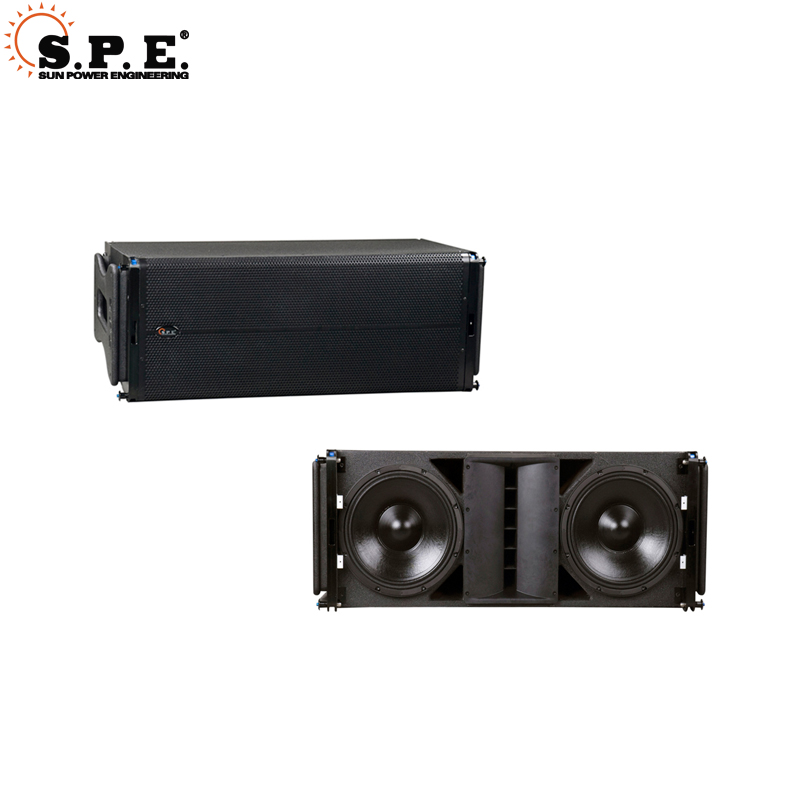
Итак, из чего состоит типичный проект? Основные компоненты:
10-дюймовый низко-среднечастотный динамик: он обрабатывает большую часть вокальных и инструментальных частот. Здесь важны качественные материалы и конструкция, например, неодимовые магниты для уменьшения веса и повышения мощности.
Высокочастотный компрессионный драйвер: воспроизводит высокие частоты, обеспечивая чёткость и артикуляцию. Выбирайте драйверы с большими диафрагмами (например, 3 дюйма или больше) для более плавного отклика и меньших искажений.
Волновод или рупор: управляет рассеиванием высоких частот, обеспечивая их идеальную интеграцию с выходным сигналом 10-дюймовых динамиков.
Корпус: Физический корпус играет решающую роль в общем звучании. Он должен быть жёстким, чтобы минимизировать резонансы и вибрации. Кроме того, крепёжные элементы должны быть прочными и надёжными.
Внутренний кроссовер (или внешний DSP): разделяет аудиосигнал между динамиками низких, средних и высоких частот. Высококачественные компоненты и точная настройка — залог сбалансированного и естественного звучания.
Глубокое погружение в вопросы дизайна: больше, чем просто укладка коробок
Проектирование хорошего 10-дюймового линейного массива — это не просто выбор правильных компонентов, а вопрос их взаимодействия. Вот несколько ключевых моментов, которые следует учитывать при проектировании:
Выбор динамика: 10-дюймовый динамик должен иметь высокий уровень чувствительности (обычно измеряемый в дБ SPL при 1 Вт/1 м). Это показывает, насколько эффективно он преобразует электрическую мощность в акустическую. Также обратите внимание на динамики с низким уровнем искажений. Параметры Тиля/Смолла важны для понимания того, как динамик будет вести себя в данном корпусе. Эти параметры описывают механические и электрические характеристики динамика.
Конструкция волновода: волновод (или рупор) играет ключевую роль в управлении дисперсией высоких частот. Цель — создать равномерную диаграмму направленности без нежелательных резонансов и искажений. Компьютерное моделирование (с использованием программного обеспечения, например, EASE Focus или аналогичного) необходимо для оптимизации конструкции волновода.
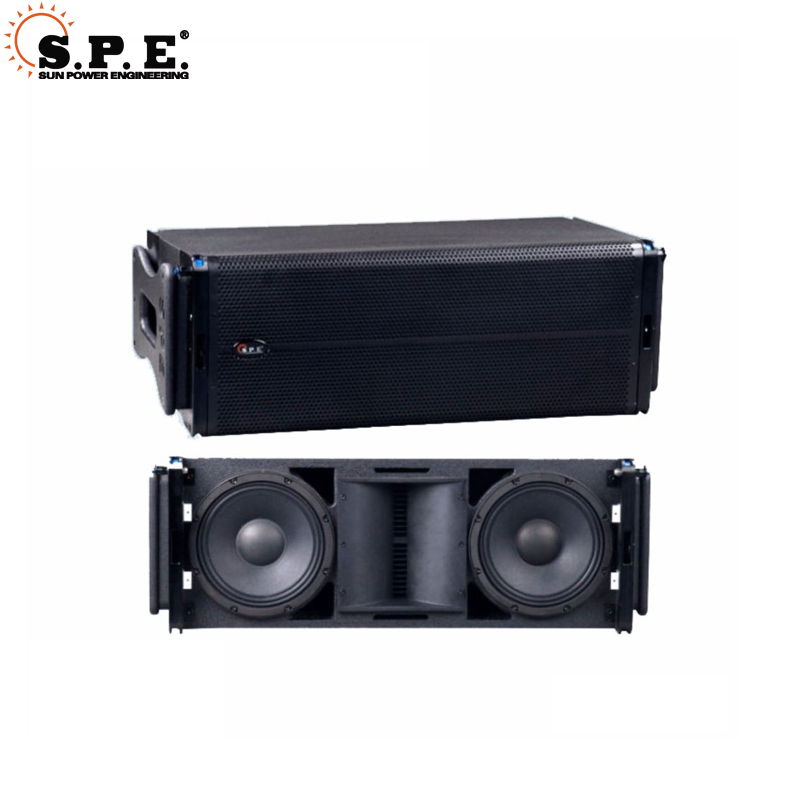
Настройка корпуса: Для оптимизации характеристик 10-дюймового динамика корпус необходимо тщательно настроить. Это включает в себя выбор правильного объёма корпуса, размера порта (если он с портом) и внутренних демпфирующих материалов. И снова, компьютерное моделирование здесь бесценно.
Кривизна массива: это искусство наклона отдельных корпусов в линейном массиве для достижения желаемого вертикального покрытия. Как правило, верхние корпуса наклонены вниз сильнее, чем нижние. Идеальная кривизна зависит от размера и формы помещения, а также от высоты массива. Программные инструменты прогнозирования необходимы для определения оптимальной кривизны массива. Большинство производителей предоставляют собственное программное обеспечение для этой цели.
DSP (цифровая обработка сигнала): Современные системы линейных массивов практически всегда оснащены DSP. Это позволяет точно контролировать частотную характеристику, эквализацию, ограничение и другие параметры. DSP также может использоваться для компенсации колебаний характеристик динамиков и оптимизации массива для различных акустических условий.
Реальные примеры и новые тенденции
Давайте рассмотрим, как внедряются эти системы и что в них нового:
Модные показы: Чёткий, направленный звук критически важен для передачи идеи дизайнера. 10-дюймовые линейные массивы часто используются для создания сфокусированного звукового поля вдоль подиума, гарантируя, что каждый зритель будет чётко слышать музыку и комментарии. Такие бренды, как Chanel и Dior, часто используют для своих показов системы меньших линейных массивов.
Корпоративные мероприятия: от запуска продукции до конференций — такие события требуют четкого и разборчивого усиления речи. 10-дюймовые линейные массивы могут обеспечить отличное покрытие в больших помещениях, минимизируя при этом проблемы с обратной связью.
Концертные площадки: Многие небольшие и средние площадки используют 10-дюймовые линейные массивы в качестве основных звуковых систем. Они обеспечивают хороший баланс мощности, чёткости и зоны покрытия.
Молитвенные дома: Разборчивость речи имеет первостепенное значение в молитвенных домах. 10-дюймовые линейные массивы способны обеспечить чистый и равномерный звук для всей общины.
Новые тенденции:
Активные и пассивные: активные линейные массивы (со встроенными усилителями и DSP) становятся всё более популярными. Они обладают рядом преимуществ, включая упрощенную коммутацию и более точное управление каждым отдельным устройством. Однако пассивные системы всё ещё распространены, особенно в крупных концертных залах, где предпочтительнее централизованное усиление.
Сетевое аудио: использование сетевых аудиопротоколов (таких как Dante) становится всё более распространённым. Это обеспечивает гибкую маршрутизацию аудиосигналов и упрощает настройку системы.
Программное управление: Современные системы линейных массивов часто управляются программным обеспечением. Это позволяет удалённо контролировать и настраивать различные параметры, такие как усиление, эквализацию и ограничение.
Чтобы получить представление о некоторых характеристиках производительности, представленных сейчас на рынке, ознакомьтесь с этими примерами от ведущих производителей:
| Модель динамика | Конфигурация драйвера | Частотная характеристика (+/- 3 дБ) | Макс. SPL (пик) | Вес (фунты) |
|---|---|---|---|---|
| L-Acoustics Kara II | 2x 8″ НЧ, 1x 3″ ВЧ | 55 Гц – 20 кГц | 142 дБ | 55 |
| d&b audiotechnik T10 | 2x 6,5″ НЧ, 1x 1,3″ ВЧ | 68 Гц – 18 кГц | 136 дБ | 35 |
| Meyer Sound Ultra-X40 | 1x 12″ НЧ, 1x 3″ ВЧ | 60 Гц – 18 кГц | 133 дБ | 52 |
Примечание: это упрощенная информация, и характеристики могут отличаться, всегда проверяйте данные производителя.
Быстрые вопросы и ответы
Вот некоторые часто задаваемые мне вопросы о конструкции 10-дюймового линейного массива колонок:
В: На какой высоте следует вешать линейный массив?
О: Это зависит от места проведения, но, как правило, желательно, чтобы нижняя часть массива находилась на высоте не менее 8–10 футов от земли, чтобы не блокировать обзор и обеспечить равномерное покрытие.
В: Как лучше всего нацеливать линейный массив?
A: Используйте программу-прогноз от производителя! Она учитывает размеры помещения и характеристики акустических систем, чтобы подобрать оптимальные углы. Не гадайте!
В: Можно ли использовать 10-дюймовый линейный массив на открытом воздухе?
О: Да, но необходимо учитывать ветер, температуру и влажность. Также убедитесь, что динамики хорошо защищены от непогоды. Возможно, вам понадобятся дополнительные корпуса для компенсации рассеивания звука на открытом воздухе.
В: Насколько важен сабвуфер с 10-дюймовым линейным массивом?
О: Очень важно! Хотя 10-дюймовые динамики хорошо справляются с нижней серединой, для воспроизведения глубоких басов вам понадобятся сабвуферы. Хорошее практическое правило — использовать как минимум один сабвуфер на каждые два корпуса линейного массива.
В: Какой усилитель следует использовать для питания 10-дюймового линейного массива?
A: Усилитель должен быть достаточно мощным для работы с динамиками без клиппинга и искажений. Ищите усилитель, способный выдавать как минимум вдвое большую программную мощность, чем мощность динамиков. Также убедитесь, что усилитель совместим с импедансом динамиков.

